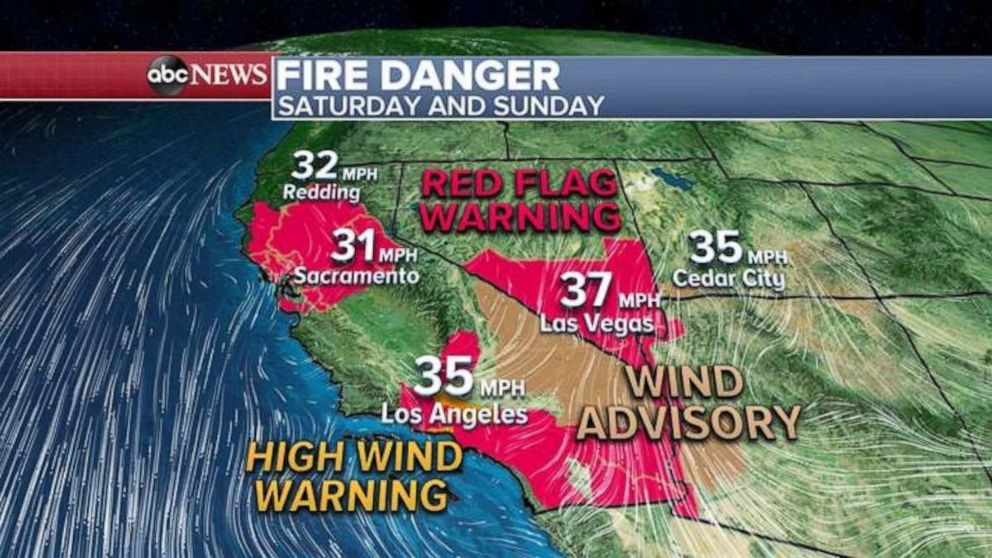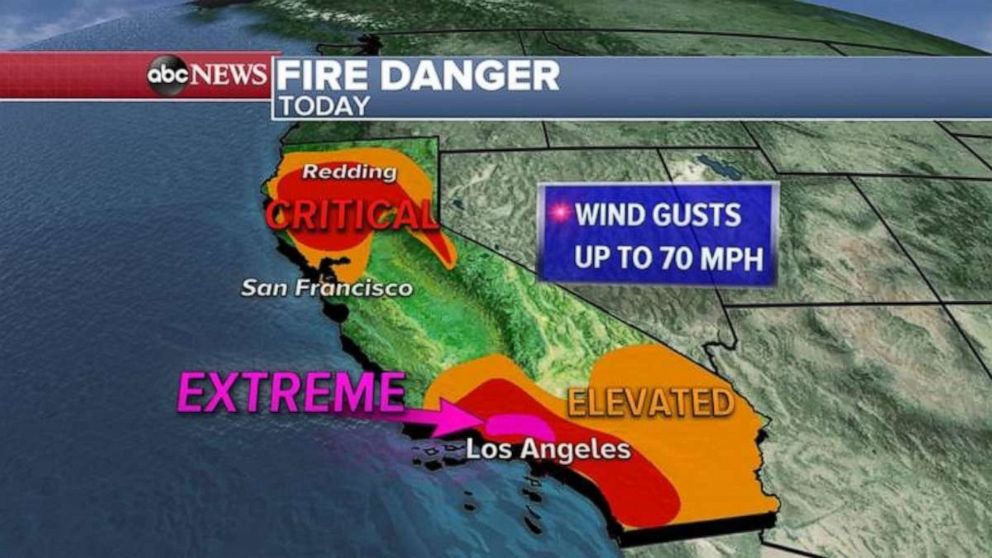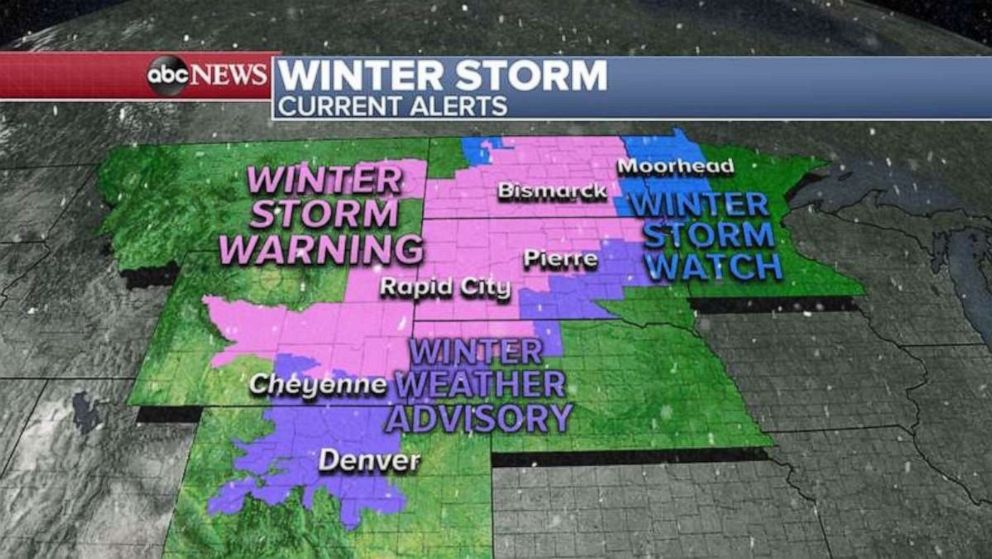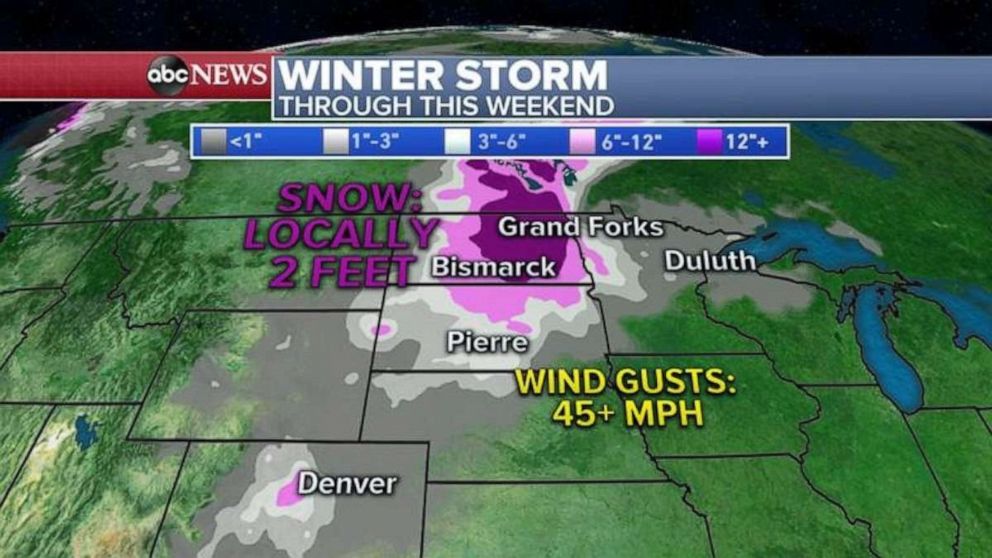Fire danger in Southern California, heavy snow in Dakotas, coastal storm in Northeast
Gusty, dry winds continue to impact parts of the West including California today.
Some of the wind gusts have already surpassed 50 mph in parts of Northern California, with humidity as low as 3 percent.
Because of the very dry conditions, the Briceburg fire in Mariposa County has more than doubled in size, and evacuations are in effect. The fire is burning in relatively rural area near Yosemite National Park.

Today the worst of the gusty dry winds will shift into Southern California, where they're called Santa Ana winds.
NOAA has issued a rare extreme fire danger warning for Los Angeles and Ventura counties, with wind gusts possible up to 70 mph and very low relative humidity. With these conditions, any fire can spread very quickly.

Meanwhile, a record snowfall brought nearly half a foot of snow to Billings, Montana, Wednesday. Some areas of Montana have received up to 13 inches of snow.
Denver is getting slammed today with temperature whiplash: It was 83 degrees yesterday in the city, but by tonight the temperature will be in the teens. This could be a 60+ degree temperature drop in a very short period of time, possibly close to the all-time 48 hours record.
Already, seven states are under winter storm warnings, watches and advisories.

On the southern end of the storm system, we could see severe storms with damaging winds, hail, and a few tornadoes, from Dallas to Tulsa and into Missouri.
The heaviest snow will be in the Dakotas on Friday and Saturday, where some areas could see up to two feet of record-breaking October snow. Combined with gusty winds over 45 mph, the weather could shut down I-90 and I-94.

Finally, an ocean storm is backing up toward the Northeast U.S., with gusty winds 30-50 mph, heavy rain up to 5 inches, and coastal flooding.
The worst hit areas will be eastern New England and eastern Long Island, especially Cape Cod and Suffolk County, Long Island, where wind alerts and flood alerts have been posted.
The worst of the storm will be through Friday, after which the storm will begin to weaken and move away from East Coast by the weekend.




